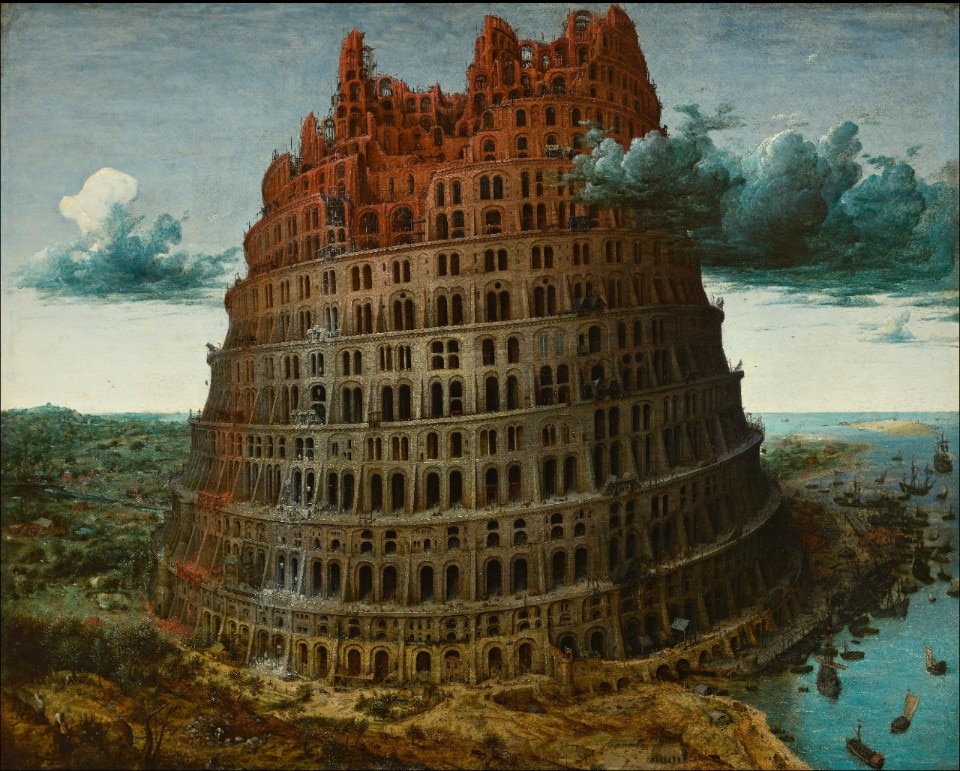In the calendar of the city that never sleeps, April 4, 1973, stands as a crucial date—an engraving, an indelible mark in the architecture of New York’s soul. On that day, the World Trade Center opened its doors, unveiling the vertigo of its Twin Towers to the world. Minoru Yamasaki, the architect who shaped this dream of steel and glass, had conceived not just skyscrapers but cathedrals of trade, pinnacles of a modernity that was believed to be invincible.
The towers rose, defying gravity and convention, instantly becoming symbols of a city that, in its perpetual motion, seemed capable of ruling the world. September 11, 2001, changed the narrative. Once icons of power, the towers became a tragedy. From omnipotence to absence: Ground Zero, the place of silence, remembrance, and tragedy.

But why the tower? What is its anthropological and artistic meaning? The elevation of the tower—an architecture that pierces the celestial vault—embodies a vertical obsession that has followed humanity through the centuries. Since the dawn of civilization, the tower has assumed the role of a sentinel of power, an impregnable stronghold dominating the landscape, a fortress against the unknown and the enemy.
Medieval castles, with their imposing stone structures, expressed both pride and defense. On the other hand, the Tower of Babel tells the story of the vain attempt to ascend to the divine. The bell tower, still a tower in essence, becomes an echo of prayers, an immaterial bridge between the earthly and spiritual spheres.

During the Renaissance, humanity turned its gaze toward the heavens with the curiosity of a scientist, and towers became observatories, tools of knowledge, like Galileo’s. In the modern age, concrete and steel shaped skyscrapers that claw at the clouds, symbols of economic power and urban vertigo.

In folklore and literature, the tower appears as a prison, a place of isolation where the princess awaits her fate or where the alchemist seeks the elixir of immortality. In tarot, it represents sudden destruction, inevitable catharsis, the lightning bolt that pierces the veil of illusion.
Then, the tower is an enigma, vertical, an echo of ambitions, fears, and hopes. A monument to humanity and its perpetual quest for elevation, an obsession that keeps rising, stone by stone, in our collective imagination. For this reason, some symbolic and psychoanalytic interpretations have referred to towers as phallic symbols—totems and taboos of a collective sexuality, as deep as it is unconscious.
The towers rose, defying gravity and convention, instantly becoming symbols of a city that, in its perpetual motion, seemed capable of ruling the world.
The Great Tower, a work created by Giorgio de Chirico in 1913, emerges as a visual enigma, a monument to suspension of sense and time. In this painting, the artist articulates his metaphysical vision through a language that transcends objective representation, delving into the depths of the unconscious. The tower, the main element of the composition, is not merely an architectural structure but a symbol laden with ambiguity, a rupture in ordinary perception.

At the base of this imposing structure, two human silhouettes stand as silent presences, emphasizing the sense of isolation and immobility. They are not living figures but shadows—echoes of humanity reduced to pure form, mere presence in a setting that transcends them. Giorgio de Chirico creates a space that defies the laws of physics and the rules of perspective, a stage for spectral apparitions where humanity is alienated in the urban context.
Flat colors and defined contours enhance the sense of artifice, of mental construction. The sharp and oblique light does not illuminate but instead reveals the hidden unease in every element of the artwork. The Great Tower is an investigation into the depths of the self, an exploration of existential loneliness.
The Eiffel Tower by Georges Seurat transforms the idea of the tower into a purely aesthetic element, disassembling reality into a myriad of color dots—a chromatic dust that recomposes itself into a new, vibrant vision, almost beyond matter itself.
Here, the tower symbolizes an era, a city projecting itself into the future with originality and innovation. Seurat paints it as an architecture that rises against the sky with the immaterial presence of a dream. It is not the tower as we see it, but the idea of the tower—its essential skeleton, reduced to a sequence of dots that define its contours with almost obsessive precision.

Light, a central element in Seurat’s artistic exploration, vibrates on the tower’s surface, dematerializing it, making it almost ethereal. There is no solidity, no weight—only a network of tiny, material dots that capture and refract light in a symphony of colors. In this way, the French master does not paint the Eiffel Tower but its essence, its soul, capturing the novelty it represented. A work that becomes an analysis, dissecting reality only to recompose it into a new form, more truthful than truth itself.

In Paul Thek’s Untitled (cityscape with twin towers), an urban landscape unfolds. It transcends topographical representation to become an allegory of an existential condition. The Twin Towers—symbols of architectural and financial power—emerge from a nebulous mass of discarded materials, fragments of a decontextualized and scattered humanity.
The New York artist, with his unmistakable poetics of the fragment, constructs an image that is both ruin and vision. The city becomes the stage of a theater of the absurd, where everything appears faded, teetering between grandeur and decay. Here, the city is not a place of harmony and progress but a space of conflict and disorientation, where the individual is confronted with their own fragility and loneliness.
Opening image: Pieter Bruegel il Vecchio, De "Weinig" Toren van Babel (The "Small" Tower of Babel), 1563. Museum Boijmans van Beuningen, Rotterdam, Netherlands. Courtesy WikiArt

